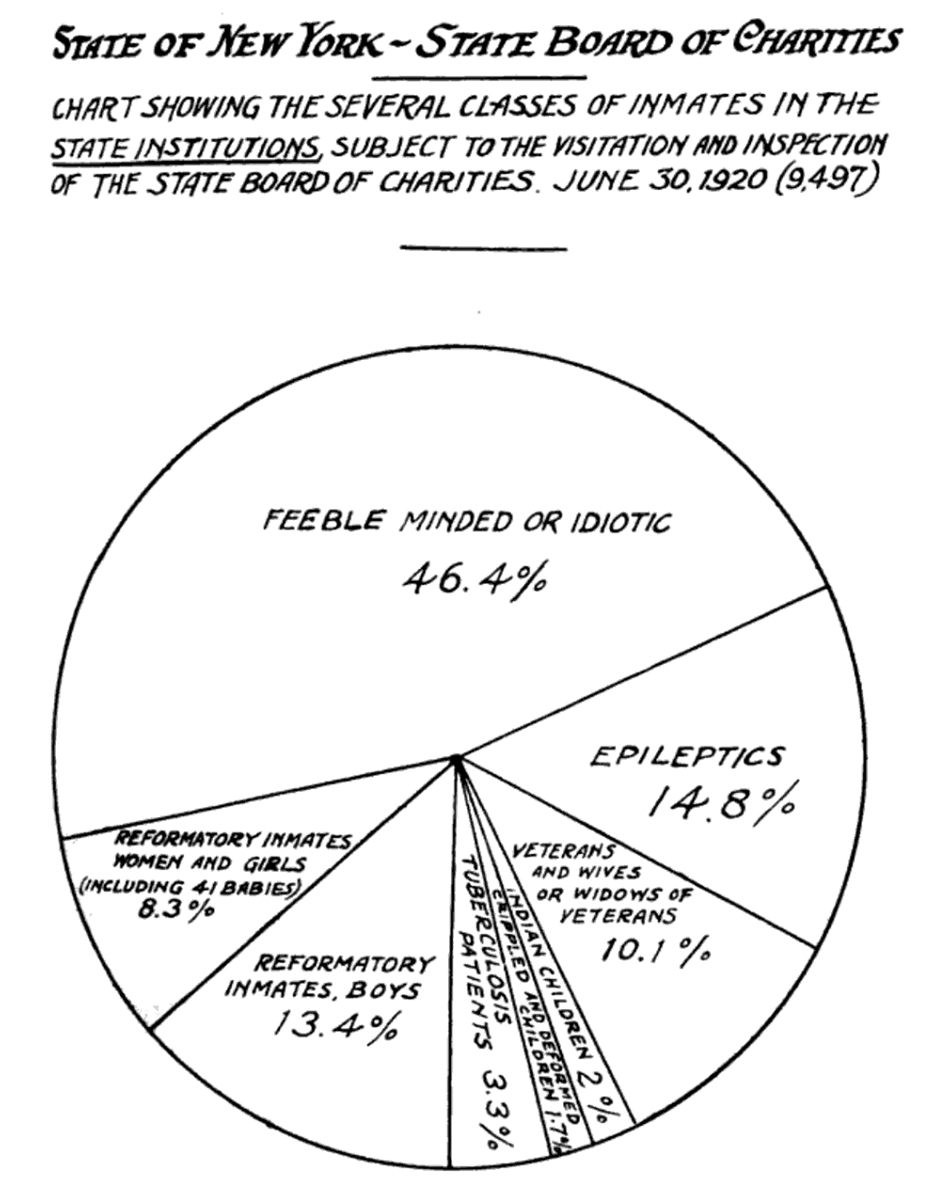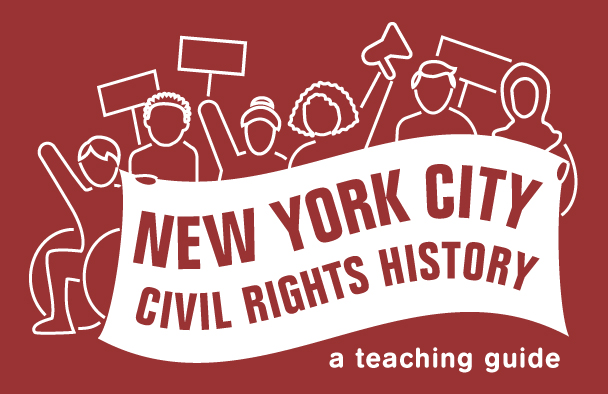You are here:
Chart of Inmates in the State Institutions

Date: January 1921
Caption: Pie chart depicting various types of inmates housed in state institutions.

State institutions grew throughout New York State after the founding of the New York Asylum in 1851 and into the mid-20th century. Labeled “inmates,” people with different types of disabilities were often counted and categorized alongside “reformatory” inmates, or delinquent youth, some of whom may have also been disabled. Other classes of inmates included “tuberculosis patients,” “Indian children,” and “veterans and widows of veterans.”
Several of these institutions were built in New York City on the underused islands between Manhattan and Brooklyn, segregating people completely from society.
Categories: New York State
Tags: institutionalization of Disabled people and people labeled disabled, racist segregation, disability labels, policing and the criminal legal system, exclusion from schooling
This item is part of "Behavior and Control: Disability and Incarceration" in "Seeking Equity for Disabled Students"
Item Details
Date: January 1921
Creator: New York State Board of Charities
Copyright: Public domain
How to cite: “Chart of Inmates in the State Institutions,” New York State Board of Charities, in New York City Civil Rights History Project, Accessed: [Month Day, Year], https://nyccivilrightshistory.org/gallery/chart-of-inmates.
Questions to Consider
- What do the categories of people on this pie chart have in common?
- What types of disability are represented on this chart? Are they visible or non-visible disabilities?
References
How to Print this Page
- Press Ctrl + P or Cmd + P to open the print dialogue window.
- Under settings, choose "display headers and footers" if you want to print page numbers and the web address.
- Embedded PDF files will not print as part of the page. For best printing results, download the PDF and print from Adobe Reader or Preview.
